
Place-driven Practice
Running for just two weeks across various locations in greater Walyalup, the Fremantle Biennale: Sanctuary, seeks to invite artists and audiences to engage with the built, natural and historic environment of the region.

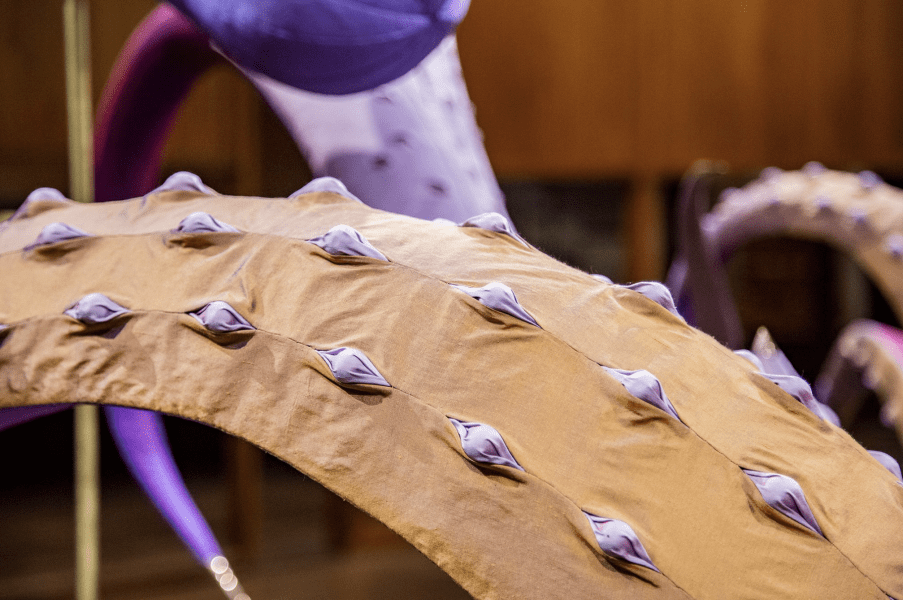
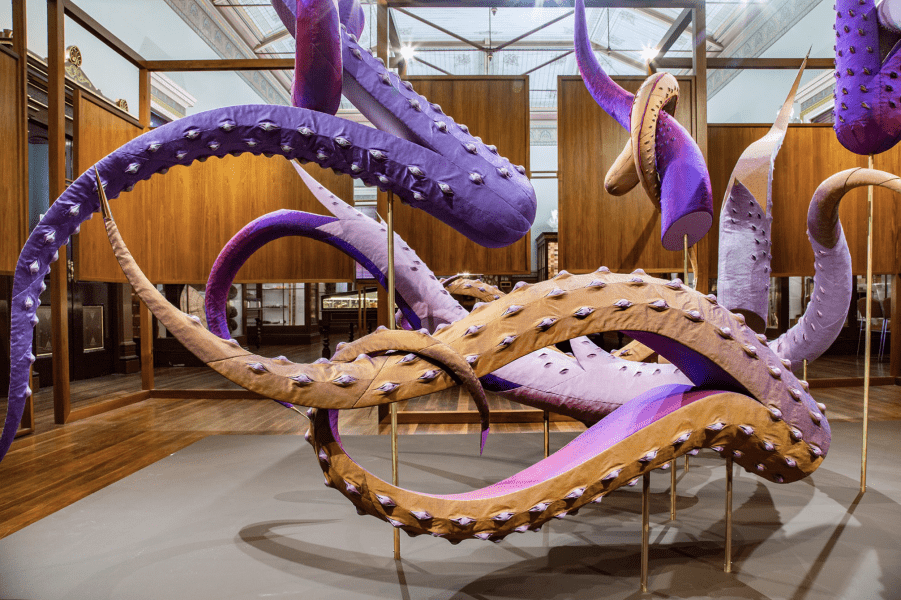

Julia Robinson is describing her favourite folk tradition: the Burryman. “It’s a guy dressed from head to toe in a stocking suit onto which thousands of burrs are stuck,” she explains. In an annual ceremony dating back hundreds of years, this alarming figure covered in 11,000 burrs is led on foot around the Scottish town of South Queensferry for seven hours, visiting every pub and drinking whiskey through a straw. The reasons for the tradition are lost, but it’s thought to bring good luck to the town, with bad luck sticking to the burrs. “It’s a real honour to be the Burryman, you have to earn it.”
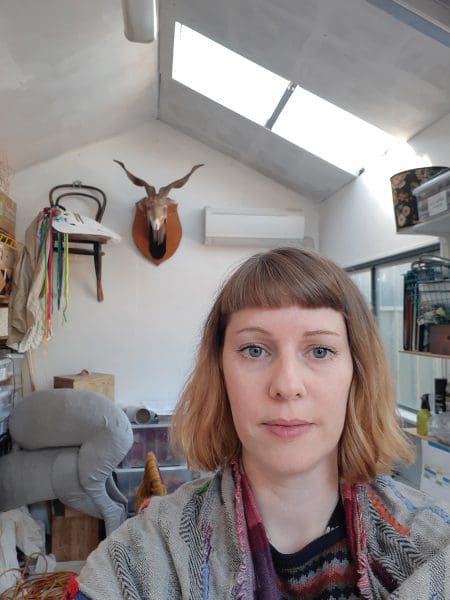
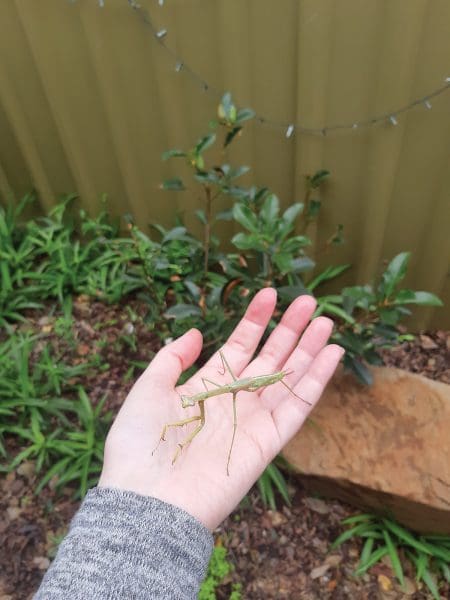
A self-described folklore enthusiast, Robinson regales me with her other favourite traditions. One relates to the Dorset Ooser, a larger-than-life wooden head complete with horns, beard and staring eyes, plus a hinged jaw that can open and close. Another is the Mari Lwd from Wales, a figure with a horse skull for a head. Then there is the Jack in the Green, an English tradition involving a person inside a ten-foot-high tent covered in leaves. Her interest in these regionally specific anachronisms links back to her own British heritage and weaves through her art practice.
“The ones I’m most interested in are the rituals and community gatherings that celebrate the turning of the seasons and a connection to nature,” she says. “Asking for prosperity in the year ahead, or trying to ensure a safe and happy summer, a good harvest, that sort of thing.”
Echoing many of these folkloric traditions, Robinson’s work often deals with seasonal cycles, alongside birth, sex and death. She has a regular, near-daily studio routine and observes that “routines can so easily become rituals when they start to feel imperative or you find yourself making the same moves each time.”
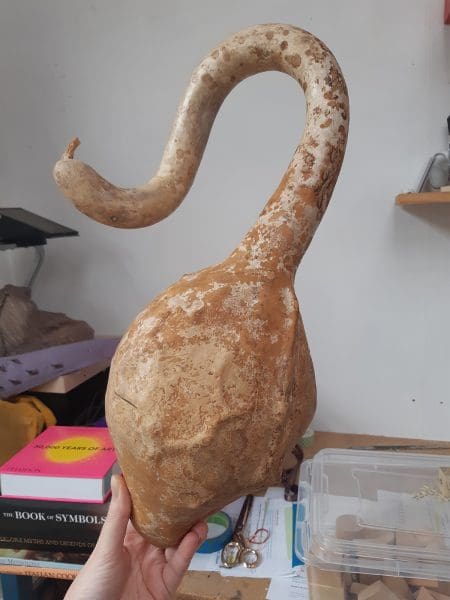
One recently rediscovered joy is a love of folk dancing, which lay dormant for years after her childhood dance group petered out. “It was like a lightning bolt,” she says of starting to dance again in late 2019. “I was just like, ‘Where have you been for the last 20 years?’” She hasn’t missed a week since. “It’s weird, because this is the only time in my life that I’d stand in a room and hold hands with a bunch of adults,” she laughs. “But it’s so powerful, everyone moving in unison, I just love it—it’s an absolute passion now, and it feels like an extension of my practice as well.”
When I speak to Robinson over video chat, it’s in the midst of lockdown restrictions. Any semblance of normal routine has dissolved, and we are both working from home offices; Robinson is accompanied by her cat Chewbacca. “I’m normally in the studio between five to seven days a week, and it’s gone to zero,” she laments. While her studio is still theoretically accessible, her teaching work has temporarily ballooned as universities scramble to put courses online. “At the moment I feel the furthest from being an artist I’ve ever been.”

While—joyously—the dance group has been able to continue rehearsing via video conference, it’s clear that for Robinson the isolation of the studio is the focal point of her practice, even perhaps her sense of self. “It’s absolutely my favourite place to be,” she says, glowing. “It’s the place where I feel the most happy, comfortable, autonomous, on top of things.” She has inhabited the same open-plan warehouse space for 11 years, and is evidently aching to get back to it.
Robinson is fresh from completing a major new work for the 2020 Adelaide Biennial, Monster Theatres. Her site-responsive installation, Beatrice, is housed in the Museum of Economic Botany—a fascinating space in Adelaide’s Botanic Garden that catalogues the use and trade of plant-based artefacts, everything from spices to dyestuffs to broom bristles.
Beatrice is a merging of two tales of confined, ‘toxic’ women. One is Robinson’s “favourite monster of all time” named Scylla, the nymph-turned-seamonster of Greek myth, who lives in a cave and is often depicted with tentacles or multiple heads, a litter of unborn puppies in her womb. The other, the work’s namesake, is from an 1848 story by Nathaniel Hawthorne titled Rappaccini’s Daughter: Beatrice is a young woman who, raised by her scientist father in a garden of poisonous flowers, is poisonous to others in turn. Trapped in the garden, Beatrice tends to the purple blooms of a plant that she treats as her sister.
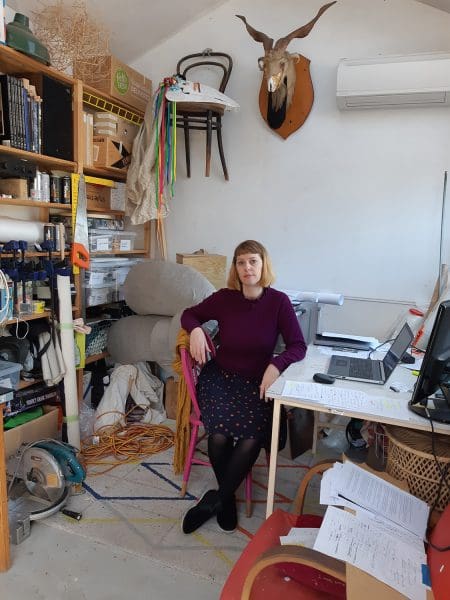
Robinson’s tentacled, writhing sculpture is installed in a semi-enclosed space inside the museum. Like its monstrous subjects, it was subject to containment during COVID-19 restrictions, but has now been revealed anew. The work’s purple fabric surface is textured with slits and smocking, techniques drawn from lush Elizabethan clothing that speak to the opening up of interiors and “the excess of nature”. Robinson’s interest in costume permeates her practice, and she takes great joy in the laborious making processes.
“It’s sublime, it’s just perfect,” she says of being immersed in a project. “It’s like a hunger that I have when I’m in the middle of a body of work, even on bad days when things aren’t going right—I wake up in the morning and all I can think of is, I want to go to the studio. And normally what sends me home in the evening is literal hunger. I get studio hunger in the morning and food hunger in the evening.”
2020 Adelaide Biennial of Australian Art: Monster Theatres
Art Gallery of South Australia and Adelaide Botanic Gardens
Until 1 August 2020
The Art Gallery of South Australia is currently open, with social distancing and hygiene measures in place.
This article was originally published in the July/August 2020 print edition of Art Guide Australia.